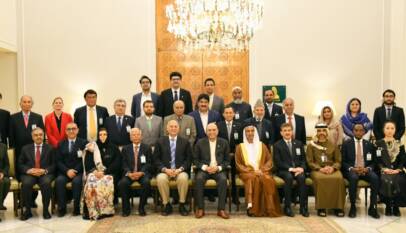Greening CPEC: Pak, China to ensure decreased carbon emissions along corridor
The Ministry of Climate in coordination with CPEC Authority is taking up the issue of high carbon emissions along the corridor. The expected 7000 trucks and trolleys that would ply on the roads would emit a large amount of carbon dioxide i.e. 36.5 million tons. The plan prepared by the ministry involves improving the aerodynamic character of vehicles; switching to alternative fuels e.g. biodiesel; improving road infrastructure; revising maximum weights and dimension of heavy-duty vehicles under European Molecular System (EMS), and truck platooning (linking of two or three self-driving trucks in convoy). These measures have proved to be successful in developed countries.
Islamabad : The climate change ministry is in a process to evolve a comprehensive strategy to combat expected daily release of 36.5 million tons of carbon dioxide due to heavy vehicular traffic under China-Pakistan Economic Corridor (CPEC) project.
According to the latest data, climate change ministry has completed initial work in collaboration with the CPEC Authority and it would also get technical help from the Chinese government to reduce release of CO2 especially on the Karakorum Highway.
Various mega road projects are currently being pursued under the CPEC project and it is expected that some 7,000 trucks and trolleys would ply on these roads releasing a certain amount of carbon dioxide.
The record showed that the ministry has prepared a plan involving various measures such as improving the aerodynamic character of vehicles; switching to alternative fuels e.g. biodiesel; improving road infrastructure; revising maximum weights and dimension of heavy-duty vehicles under European Molecular System (EMS), and truck platooning (linking of two or three self-driving trucks in convoy).
These measures have been proved to be successful in many countries such as Denmark, Finland, the Netherlands, and Sweden, while successful tests are underway in Belgium, Germany, and Spain.
An earlier study conducted by the ministry revealed that carbon dioxide emissions and particulate matter can change the local climate by deteriorating the air quality. Vehicle trafficking is an important environmental threat under CPEC in the northern areas of Pakistan.
Air pollution has both acute and chronic health effects and contributes to increased morbidity and hospital admissions. Increased carbon dioxide emission can drastically melt the glaciers and increase flash floods.
Nonetheless, catalytic converters suggested by earlier can change only the Green House Gases (GHGs) from unstable to stable form despite expensive technology and a short life span.
Chinese envoy Zhao Shiren urges students to uphold integrity and strengthen China-Pakistan ties
LAHORE:The Consul Generals from several countries and other distinguished guests attended …











